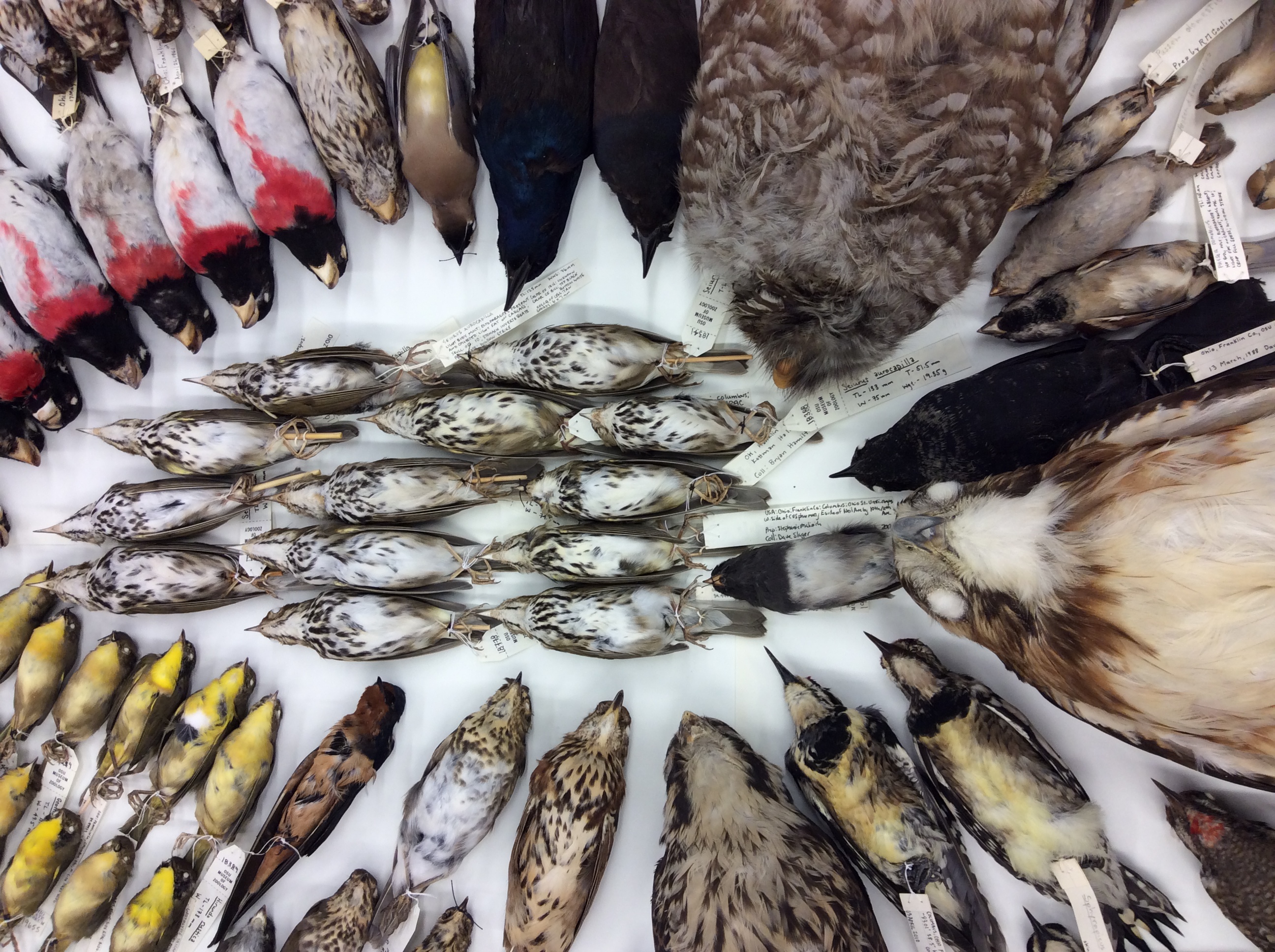
A male Passenger Pigeon. One of only a few Passenger Pigeons found here at the Museum Of Biological Diversity.
By Raymond Gonzo
About a century ago, a bird named Martha was found dead in her cage at the Cincinnati zoo. The death of that one lone bird would mark the end of the Passenger Pigeon (Ectopistes migratorius), a bird that had been relentlessly hunted to the point of extinction. In honor of both Earth day and the recent anniversary of Martha’s death, I thought it would be a good time to write about the Passenger Pigeon and remember its iconic extinction.
I realize that the centennial of Martha’s death was last year (last September to be exact) and that there has been an extensive amount of coverage and reflection on the extinction of the Passenger Pigeon. Since this will be the Tetrapod collection’s first “Species-of-the-Month” post however, one cannot think of a better animal in our inventory that showcases the broad scope of diversity and history of the collection. Not to mention a species that ties into Ohio’s wildlife conservation history.
What makes this extinction so significant is that, at one point, the Passenger Pigeon was probably the most numerous bird species in the world. That is not a fact to be taken lightly, these pigeons could actually block out the sun when a flock flew overhead. When he was making sketches for his famous Birds of America book, John James Audubon recounted how he had encountered giant flocks of these pigeons flying overhead. Many scientists and historians estimate that the Passenger Pigeon had a population of about 3-5 billion individuals. And yet, these birds are extinct. There are only 20 specimens preserved in our collection. How did mankind single-handedly wipe out the most numerous bird species in the world? With reckless abandon, as people killed Passenger Pigeons without restraint for food, sport and to make an accessory in ladies’ fancy hats. Coupled with the uncontrolled destruction of the hardwood forests that provided the pigeons with food and nesting sites, it looks as though the blame lies solely on us.
However, timing may also have played a role for the demise of the pigeons. According to a new study, conducted by Chih-Ming Hung et al. (2014) from the University of Chicago, the pigeons’ population numbers may have been declining in the late 1800s. According to this new study, the pigeons’ numbers have always been fluctuating due to the varying levels of abundance of resources that pigeons need for survival such as food and nesting sites. In this study, Hung hypothesizes that a downward trend in population size occurred simultaneously with human exploitation and that the combination of the two triggered the pigeon’s rapid extinction. While this new information does explain how the species could disappear so rapidly, it doesn’t excuse our careless actions that lead to its extinction.
We hope to have learned so much about wildlife conservation since the extinction of the Passenger Pigeon. We have been able to spare the Bald Eagle, the gray wolf and the American bison from the same fate and we have entered an age where we can start thinking about resurrecting once extinct species such as the Passenger Pigeon. Cloning techniques and the DNA of the closest living relatives may allow us bring the species back. So there is a chance that we’ll see these pigeons in the wild again.
References
Hung C, Shaner P.J., Zink R.M., Lui W, Chu T, Heung W, and Li S. 2014 Drastic Population Fluctuations Explain the Rapid Extinction of the Passenger Pigeon. PNAS 111.
Audubon, John J. The Birds of America, from Drawings Made in the United States and Their Terriories. Vol. 5. New York: G.R. Lockwood, 1870. 25-35. Print.
